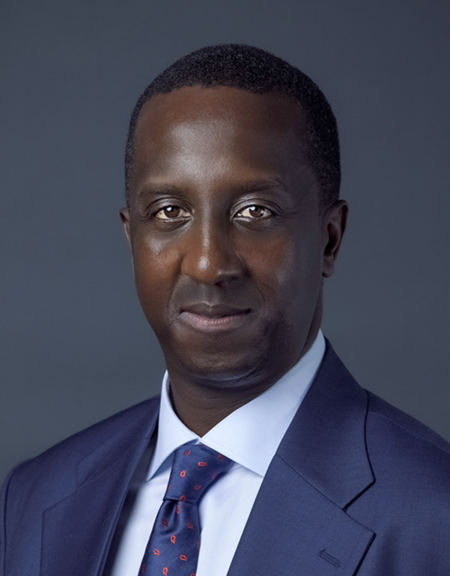No CrossRef data available.
Article contents
Interview with Itonde Kakoma
President and CEO, Interpeace
Published online by Cambridge University Press: 27 September 2024
Abstract

Itonde Kakoma is the President and CEO of Interpeace. Prior to Interpeace, he served as the Permanent Representative of the International Federation of Red Cross and Red Crescent Societies (IFRC) to the African Union and International Organizations (2021–23). Previously, Mr Kakoma served in various leadership capacities on matters of international peace mediation, including as Director for Global Strategy and member of the leadership team at CMI – Martti Ahtisaari Peace Foundation. Additionally, Mr Kakoma was Assistant Director for the Conflict Resolution Programme at the Carter Center, managing a portfolio of the Center's peace initiatives and supporting former president Carter's back-channel diplomatic efforts. He is an experienced facilitator and moderator for high-level peace processes and dialogue fora and has expertise in mediation, negotiation, process design, humanitarian diplomacy and transitional justice.
Keywords
Information
- Type
- Interview
- Information
- International Review of the Red Cross , Volume 106 , Issue 927: IHL & Peace , December 2024 , pp. 1012 - 1022
- Copyright
- Copyright © The Author(s), 2024. Published by Cambridge University Press on behalf of International Committee of the Red Cross
Footnotes
Interview conducted by Bruno Demeyere, Editor-in-Chief of the Review, and Jillian Rafferty, Managing Editor of the Review.
The advice, opinions and statements contained in this article are those of the author/s and do not necessarily reflect the views of the ICRC. The ICRC does not necessarily represent or endorse the accuracy or reliability of any advice, opinion, statement or other information provided in this article.
References
1 “The ICRC firmly emphasizes the inherent connection between IHL, humanitarian principles and peace. It views IHL as an integral part of the broader international legal framework, which is centred on peace. Leveraging its role as a neutral intermediary, the ICRC offers its services and seizes opportunities to promote the humanitarian aspects of conflict prevention as well as conflict or dispute resolution.” ICRC, ICRC Strategy 2024–2027, 14 December 2023, available at: www.icrc.org/sites/default/files/wysiwyg/Activities/icrc_institutional_strategy_2024-2027.pdf (all internet references were accessed in August 2024).
2 “The health of all peoples is fundamental to the attainment of peace and security and is dependent upon the fullest co-operation of individuals and States.” Constitution of the World Health Organization, 1946, Preamble, available at: https://apps.who.int/gb/bd/PDF/bd47/EN/constitution-en.pdf?ua=1.
3 “Whereas universal and lasting peace can be established only if it is based upon social justice; And whereas conditions of labour exist involving such injustice, hardship and privation to large numbers of people as to produce unrest so great that the peace and harmony of the world are imperilled; … The High Contracting Parties, moved by sentiments of justice and humanity as well as by the desire to secure the permanent peace of the world, and with a view to attaining the objectives set forth in this Preamble, agree to the following Constitution of the International Labour Organization.” Constitution of the International Labour Organization, 1919, Preamble, available at: https://tinyurl.com/uatdt557.
4 “The Red Cross, born of a desire to bring assistance without discrimination to the wounded on the battlefield, endeavours – in its international and national capacity – to prevent and alleviate human suffering wherever it may be found. Its purpose is to protect life and health and to ensure respect for the human being. It promotes mutual understanding, friendship, co-operation and lasting peace amongst all peoples.” 20th International Conference of the Red Cross and Red Crescent, “Proclamation of the Fundamental Principles of the Red Cross”, 1963, available at: https://international-review.icrc.org/sites/default/files/S0020860400011311a.pdf.

